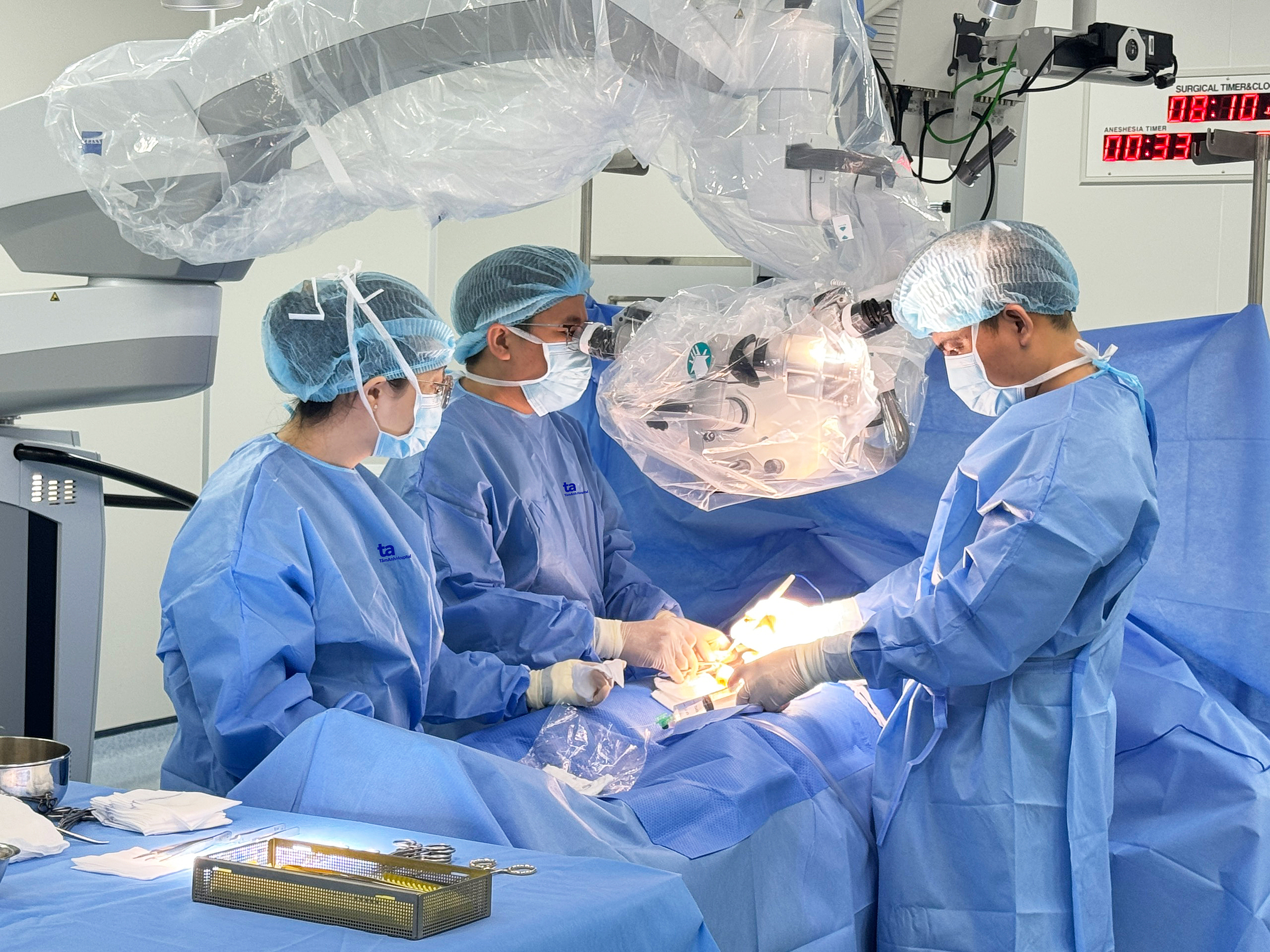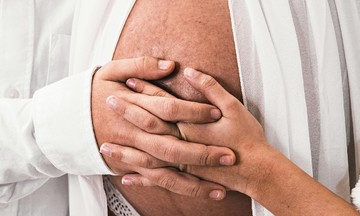At the Fertility Support Center, Tam Anh General Hospital - District 8, Kien's semen analysis revealed only a few immobile, abnormally shaped sperm. Dr. Duong Quang Huy, Head of the Andrology Unit, said one of Kien's testicles had shrunk to about 2 ml (normal is 15-25 ml) and lost its sperm production function entirely. The other testicle had a varicocele.
Wanting to have children soon, Kien first tried in vitro fertilization (IVF) before surgery to treat the underlying condition. However, even after combining three samples, only one poor-quality, day-6, grade-3 embryo was obtained, with a very low implantation potential. The embryo transfer was unsuccessful.
"The sperm collected for Kien's IVF came from a very poor environment (the testicle) due to the varicocele," Dr. Huy explained. He added that while the sperm may appear normal in shape, the DNA inside could be severely fragmented, leading to poor quality.
Kien underwent varicocele surgery to improve blood flow to the testicle and increase sperm quality. Using a 30x surgical microscope, the doctor identified and tied off the dilated veins while preserving the testicular artery and lymphatic vessels to avoid postoperative hydrocele (fluid accumulation in the scrotum).
 |
Dr. Huy (center) operating on Kien. Photo: Tam Anh General Hospital - District 8 |
Dr. Huy (center) operating on Kien. Photo: Tam Anh General Hospital - District 8
The surgery improved the testicular environment, reducing temperature and oxidative stress, and helping restore sperm production in both quantity and quality. A follow-up semen analysis 3 months later showed over 6 million healthy sperm. According to Dr. Huy, the sperm production cycle typically takes about 3 months, suggesting further improvement is likely.
Kien needs to continue monitoring for another 6 months, maintain a healthy lifestyle, and have regular intercourse to conceive naturally. If unsuccessful, the couple will undergo intrauterine insemination (IUI) or IVF again with a higher success rate.
Abnormal sperm is a common cause of male infertility. It depletes sperm count and causes abnormal shapes (small heads, thick necks, short or coiled tails), slow or no movement, and difficulty penetrating the egg, reducing the chances of conception. Causes often include genetic factors (chromosomal abnormalities or gene mutations), hormonal disorders, exposure to chemicals, high temperatures, radiation, smoking, alcohol, drug use, stress, and an unhealthy diet. Tumors, injuries, or congenital abnormalities causing blockage of the sperm ducts, preventing sperm from exiting, can also be a cause.
Dr. Huy recommends men seek early examination if they experience fertility problems and maintain a healthy lifestyle to avoid harming sperm. Depending on the cause, treatment may involve medication, surgery, or lifestyle changes.
Dinh Lam
*The patient's name has been changed.












